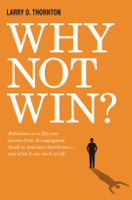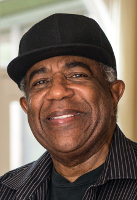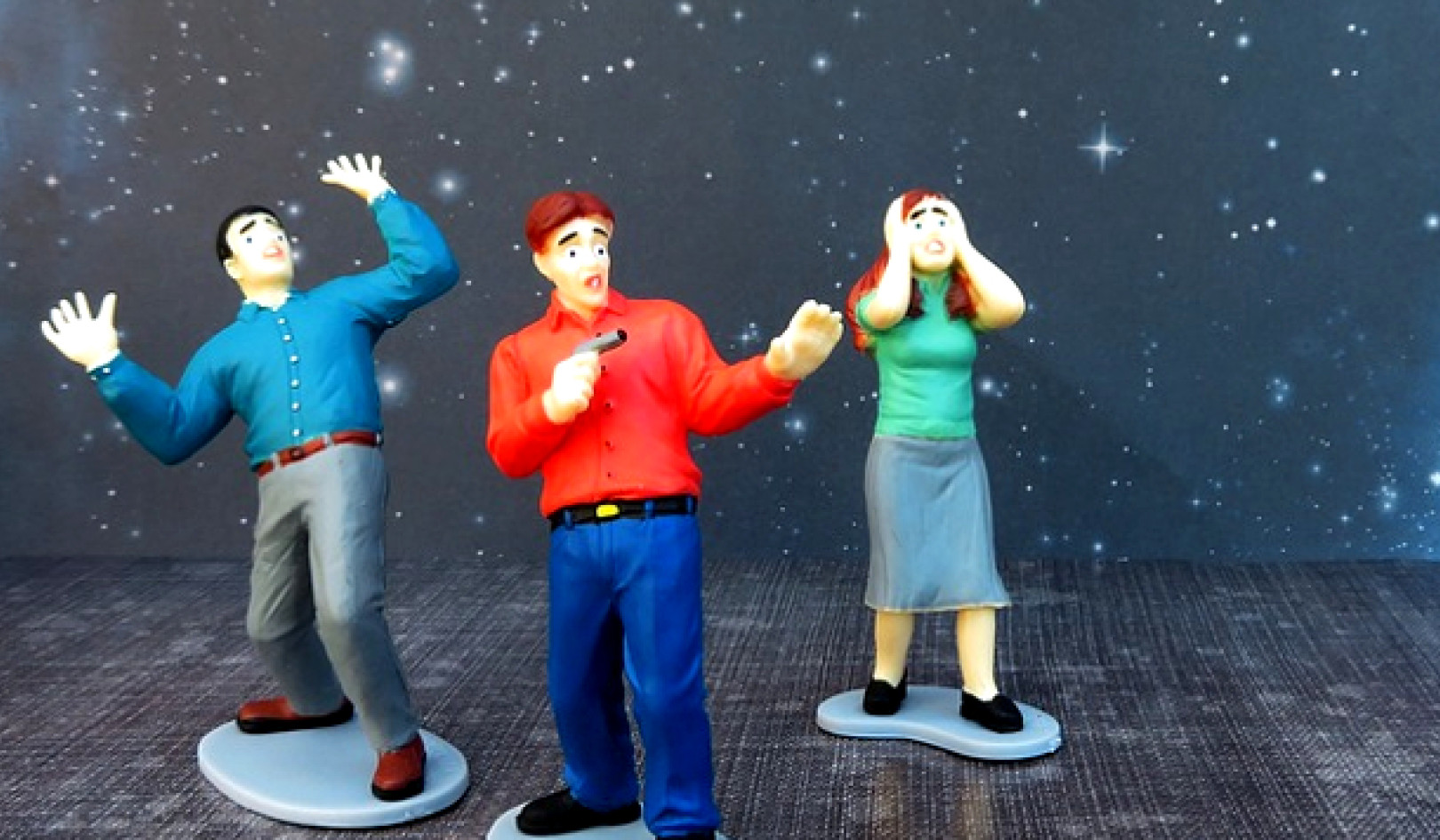So often, it seems the things that happen to us in life are not so much about what is happening in the moment, but rather are about placing us on a path to lead the way for others.
It would be years before I realized the truth of that.
First of all, consider that I was born in 1954. That was a big year for the United States. Dwight Eisenhower was president. Bill Haley and the Comets released “Rock Around the Clock,” which ushered in the era of rock and roll. Sports Illustrated released its first issue. The Dow Jones Industrial Average hit a record high—of 382.74 points. The world’s first nuclear submarine, the USS Nautilus, launched; the world’s first Boeing 707 flew. In my home state of Alabama, a meteorite even hit a human being—an unfortunate woman named Ann Hodges—for the first time in recorded history.
And, in Washington, D.C., on May 17, 1954, the U.S. Supreme Court released its opinion in the landmark case, Brown v. Board of Education of Topeka. The Supreme Court, which counted among its members Alabama’s own Hugo Black, voted 9–0 to reject the “separate but equal” educational system of Topeka, Kansas, and the four other locales in the consolidated litigation that led up the decision. “We conclude that, in the field of public education, the doctrine of ‘separate but equal’ has no place,” Chief Justice Earl Warren wrote for the unanimous court. “Separate educational facilities are inherently unequal.”
Brown v. Board of Education turned public education on its head from Texas to Delaware, from Missouri to Florida, and, of course, ultimately, in Montgomery. But, for me, those days were still in the future.
As the years went by, life for African Americans in the South during the 1960s was not a pretty picture. It was ugly and raw, with hard lines and jagged edges. Brown v. Board of Education had outlawed public school desegregation back in 1954, but Alabama lawmakers and law enforcers seemed to view the U.S. Supreme Court’s decision as merely a recommendation, not a requirement.
Alabama’s children continued to go to schools separated along racial lines as our legislators worked with almost diabolical creativity to avoid the Brown mandate. In fact, it took a series of federal district court rulings in Alabama, starting with Lee v. Macon County Board of Education in 1963, to really start unraveling Alabama’s segregated school system. In the meantime, the Civil Rights Act of 1964, which prohibited school boards from depriving students of the equal protection of the laws based on their race, color, religion or national origin, gave more federal teeth to the fight for equal education.
Integration Was Serious Business
Solomon Seay, an African American attorney who lived in Madison Park (in fact, his maternal great-grandfather, Eli Madison, had founded Madison Park), led the fight in our community. He and his law partner Fred Gray had successfully litigated the Lee case, and he felt strongly that blacks should take advantage of these new freedoms to attend the so-called “white schools.”
Although it might seem strange to a reader today, virtually all of the people I knew were content to stay in all-black schools, even if it meant continuing to accept segregation. None of us saw the benefit of leaving the comfort and familiarity of our classrooms to learn alongside people who had historically rejected us.
And besides, we knew what trying to integrate could mean in Alabama. In 1957, when civil rights leader Rev. Fred Shuttlesworth had the temerity to try to enter two of his daughters at Birmingham’s all-white Phillips High School, angry white hoodlums beat him nearly senseless.
In 1963, when African American students again tried to register at the University of Alabama, they were confronted with the spectacle of Governor George Wallace “standing in the school house door” to try, unsuccessfully, to block their admission. But in Birmingham a few short months later, the Ku Klux Klan seemingly retaliated to this and other defeats by bombing the Sixteenth Street Baptist Church, killing four little girls who had done nothing other than to attend Sunday School.
In short, in 1967, integrating schools in Alabama in the shadow of Jim Crow was serious business, and for a twelve-year-old like me, there was little appeal in picking such a fight.
But Attorney Seay claimed that inside the walls of those “white schools” were better classrooms, better books, and better resources. If we were going to create leaders in our community, he argued, we needed to position our people to take advantage of everything that was available.
Seay went around knocking on people’s doors and canvassing the community for participants in an integration program. He told the folks of Madison Park that the schoolhouse door was open for us and that we needed to walk on in. After much cajoling, Seay persuaded the parents of at least six children (including his daughter, Sheryl) to integrate the all-white Goodwyn Junior High School. By some strange luck—or curse as I thought at the time—I was one of them.
6 Black Kids, 1 White School
There we were: Ronnie, Eddie, Sheryl, George, Loiss, and me, standing on the side of the street in Madison Park. On that late summer morning in 1967, we were six wide-eyed black youngsters, dressed and ready to leave behind everything we knew for Goodwyn, our new school across town.
As we waited, I remember asking myself: “Why had my mother volunteered me to experience this impending torment?” My homies were at all-black Booker T. Washington Junior High, where we had spent seventh and eighth grades together. Now, I was being plucked out to spend ninth grade at Goodwyn. What had I done to deserve this? I took it personally. My October birthday would have made me younger than most of my classmates anyway, plus I had skipped first grade, so I was entering ninth grade at age twelve.
My mind couldn’t appreciate at the time that there was a bigger picture, that I was a part of a greater cause to help black people get what they needed, and now was my time to lean in and lend a hand to that struggle. If I could go back and talk to my twelve-year-old self, I would say, “This experience is not about you. I know you are young. I know you are afraid, but if you conquer this, the ripple effects will touch your children, your children’s children, and a Southern community beyond imagination.”
It would take me many years to realize those truths and, in the meantime, a big yellow school bus was approaching us. It pulled to the side of the road and, as the six of us climbed aboard, everyone who lived in Madison Park watched and prayed. We squeezed into a cluster of seats amid a sea of curious white faces and steeled ourselves to enter their world.
To my eyes, Goodwyn was a strange world of white folks. Every day, from the moment we got off the bus in the morning until we were back on in the afternoon, we were often belittled, dismissed, humiliated, and sometimes pinched, pushed, and shoved. To say those were challenging times would be the epitome of an understatement.
For example, if I took a drink of water from the hall fountain, then, for the rest of the day the white students would refuse to drink after me because that water spout had been “contaminated.” My taking a seat at a particular table in the lunchroom was cause for the white students to move to another. In phys ed, I was never picked for a team; the coach would have to assign me to one. And if by some rare circumstance I got the ball, no one wanted to touch me. I would be allowed to make an easy touchdown while my white classmates laughed.
Other gestures were less overt but in the long run maybe even more damaging. In the classrooms, white students would not sit within five feet of me. Clearly, in their eyes, I was academically inferior, and they were not going to take any chance of my inferiority rubbing off onto them. That was a lot for a twelve-year-old to process. Unsurprisingly, I began to hate school and everything and everyone associated with it. My mother had sent me to Goodwyn to learn, but instead of getting a lesson in math, science, or reading, I was getting schooled in my worthlessness and inferiority.
Life at Goodwyn took its toll on our small band of pioneers. Some students, like George, who is still my good friend today, were pulled out of Goodwyn by their parents. And who could blame those parents? Who could blame George? Who would purposely endure what we endured if they didn’t have to?
High School: Some Signs of Progress
The next year, having barely survived Goodwyn, I found myself at an essentially all-white high school. There were some signs of progress. Each year, Attorney Seay had continued to recruit more and more blacks to integrate Montgomery schools. And as more of us entered the previously all-white public schools, sports and other activities began to iron out some of the great divide between the races. As we became more accustomed to each other, circumstances began to get a little better year after year. The tensions seemed to lessen, and our daily interactions with the white students seemed to improve. My grades, unfortunately, did not.
Trying to earn a high school diploma seemed insurmountable. I had begun to shut down. But I was too young to drop out of school, and my mother definitely was not going to let that happen, so I was stuck. For me, high school was a series of frustrating defeats. By the time I became a senior, my class was preparing to graduate and advance to college or take vocational jobs without me. My fate as a loser was being cemented, I believed.
At the time, I was also working at the Majik Mart, a local convenience store. I was absolutely thrilled to be making my own money.
Like any neighborhood store, the Majik Mart had its collection of regular customers. One who never strayed from his routine would come in for his daily Schlitz Malt Liquor purchase between five and six in the afternoon. With a cavalier demeanor, he would slap a six-pack on the counter and recite his rather mundane and trite mantra, “Another day, another dollar. You and me won’t ever have shit in life anyway. You know what I’m saying, bud?”
Without any thought, I would respond, “I think you’re right.”
I saw no evidence for reasons to disagree with him. And that put me on a dangerous road. Not only was I perpetuating a negative perception of myself, but I was also buying into this man’s declaration that neither of us could or would amount to anything.
Valuable Lessons Learned
When I think back on my experiences at those schools, I can truly say that although it was painful, it wasn’t for naught. Whether I knew it or not, I had learned valuable lessons both at Goodwyn and at Lee. All of life is about getting ready. We learn to crawl in preparation to walk. We master walking so that we can prepare to run.
As crazy as it sounds, Goodwyn and Lee prepared me for a life I had no idea I would lead. Being in those all-white settings gave me a foundation for the life I am leading today: being the first and only African American in a number of boardrooms and sitting at a number of exclusive tables to make important decisions while looking around at faces that do not look like mine. Had I not learned at Goodwyn and Lee the lessons and the nuances of functioning in the unfamiliar world of white folks, I might not have been able to function in the world I live in today; in essence, I learned to be comfortable in uncomfortable settings.
I had to learn how to keep my eyes on the prize as the rewards of life are reserved only for those who stay in the game.
Copyright ©2023. All Rights Reserved.
Article Source: Why Not Win?
Why Not Win?: Reflections on a Fifty-Year Journey from the Segregated South to America’s board rooms – and what it can teach us all
by Larry D. Thornton.
 This book is a front-row seat to how one man altered his thinking to transform his life. The book begins with Larry Thornton growing up with brown skin in the 1960s in segregated Montgomery, Alabama. A desegregation school pioneer, Larry was a classroom failure until a perceptive English teacher showed him he had value and encouraged him to go to college.
This book is a front-row seat to how one man altered his thinking to transform his life. The book begins with Larry Thornton growing up with brown skin in the 1960s in segregated Montgomery, Alabama. A desegregation school pioneer, Larry was a classroom failure until a perceptive English teacher showed him he had value and encouraged him to go to college.
Larry's journey from Madison Park, Montgomery, has been a long one. Why Not Win? reflects on his most useful lessons and the anecdotes associated with them. If he were a Zen monk, his koan might well be: “Plan your past.” By that he means, think ahead one day, one week, one year, even twenty years out, and decide today your desired outcome, and work for it. “Thank God for memories,” he says; “Let’s plan to make them pleasant ones.”
Click here for more info and/or to order this hardcover book. Also available as a Kindle edition.
About the Author
 Larry Thornton is an artist, entrepreneur, and servant leader. Growing up in segregated Montgomery, Alabama, he worked his way from sign painter to advertising manager at Coca-Cola Birmingham, and became the first African American to open a McDonald’s franchise in Birmingham, Alabama. He eventually opened multiple stores and created Thornton Enterprises, Inc. His book, Why Not Win? A Reflection on a 50-year Journey from the Segregated South to America’s Boardrooms — And What it Teaches Us All (NewSouth Books, April 1, 2019), serves as inspiration for people from all walks of life. Larry founded the Why Not Win Institute to make leadership development accessible. All book sales profit goes to support the institute’s mission.
Larry Thornton is an artist, entrepreneur, and servant leader. Growing up in segregated Montgomery, Alabama, he worked his way from sign painter to advertising manager at Coca-Cola Birmingham, and became the first African American to open a McDonald’s franchise in Birmingham, Alabama. He eventually opened multiple stores and created Thornton Enterprises, Inc. His book, Why Not Win? A Reflection on a 50-year Journey from the Segregated South to America’s Boardrooms — And What it Teaches Us All (NewSouth Books, April 1, 2019), serves as inspiration for people from all walks of life. Larry founded the Why Not Win Institute to make leadership development accessible. All book sales profit goes to support the institute’s mission.
Learn more at larrythornton.com.



























